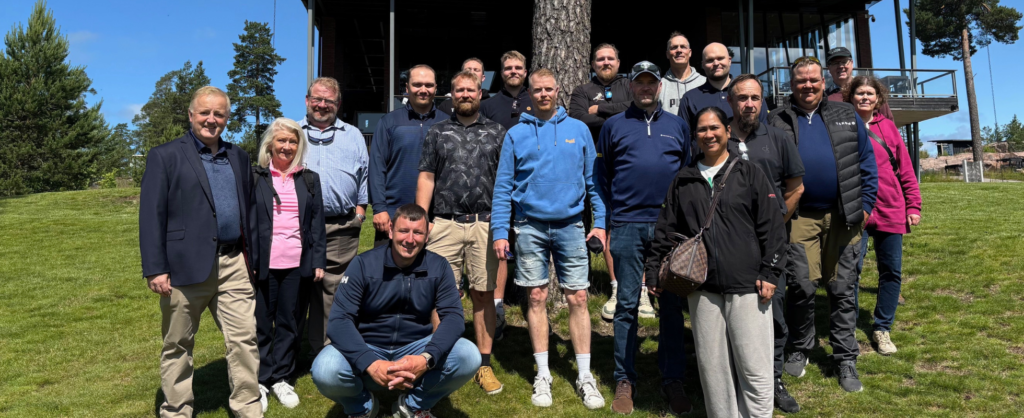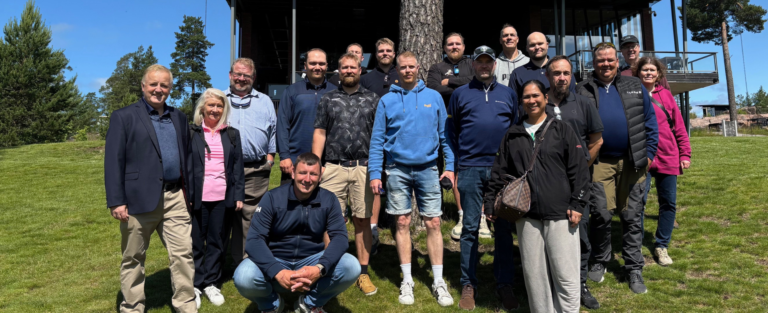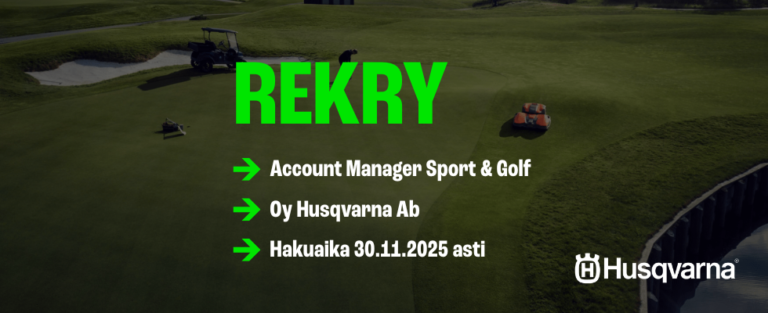
The Sterf Field Day at Hirsala Golf in Espoo, south of Helsinki in Finland, turned out to be an exciting day filled with new knowledge, fresh insights, and opportunities to exchange experiences with colleagues.
Janne Lehto, Course Superintendent at Hirsala Golf, was beaming as he welcomed the 25 or so researchers, course managers, and suppliers who attended the scenic facility at the end of June.
At Hirsala Golf, we want to be leaders in sustainable course management. Part of that is giving back to the industry. That’s why we want to be involved in research and offer our platform for research projects.
Janne Lehto
Hirsala Golf has been involved with robotic mowers for five years, and Janne Lehto reflects on those years with experience.
This is our second robot project with Sterf. We can trust that the robots work, and they do an excellent job. The quality is where we need it to be.
Janne Lehto
Karin Juul Hesselsøe, a researcher at Nibio in Landvik, Norway, is leading the project. She says: ”This project compares traditional and robotic mowing on fairways and roughs. We’re looking at grass quality and the presence of broadleaf weeds. We’re halfway through the project and are already seeing that soil compaction is lower with the robots compared to traditional mowers. It makes sense since the robots are much smaller machines, but it’s great to have the research confirm it – we’ve been able to prove it.”
How will the robots affect course maintenance?
As we see at Hirsala today, there’s been a major change in the work of the course staff. They now do much more varied tasks and not so much mowing. That’s a big difference, and from what I’ve heard from the younger staff, it’s much more interesting to work on a golf course when you don’t have to sit on a mower all the time. As we see here at Hirsala, they’re doing a lot of bunker maintenance, general upkeep, and new construction work. They have time for it because they save time by not mowing.
Janne Lehto
The most surprising discovery so far?
That the robots have become so popular so quickly – we didn’t expect that five years ago when we started. Reality has caught up with us!
Janne Lehto
Trygve S. Aamlid at Nibio in Landvik, Norway, is responsible for the research in the project Fair Water II. He explains that it is a scale-up of an ongoing project, Fair Water, which is funded by Sterf. Now, The R&A has also stepped in to fund this expansion, which consists of two sub-projects. One involves four golf courses in Finland, Norway, Denmark, and Germany, where Trygve and his team are studying drought tolerance using wetting agents and mechanical treatments.
The trial begins this year. It’s been a rather wet, rainy, and cool start to the year, so we haven’t seen many results yet. But there are two aspects. One is the use of the Multivator for mechanical treatments, which has led to higher fairway quality. The other is the difference between the two wetting agents, Qualibra and ProWet Evolve, in terms of soil and turf water content.
The second research project is being carried out on seven Swedish golf courses and focuses on the use of brackish water or treated wastewater for irrigation. According to Trygve S. Aamlid, the lack of irrigation water is the most serious threat to the expansion of golf.
If we can minimize the need for water, I believe golf has great potential to grow. In general, I think we’ll see better grass quality with less irrigation input.
Thomas Björn
What’s your message to your colleagues to encourage openness to new findings?
I think you simply have to adapt to a changing world. If you can adapt to everything new, you’ll probably be a winner. Just be flexible and open to change.
Janne Lehto
To access current results from the projects, visit Sterf.org.
To see filmed interviews with Janne Lehto, Karin Juul Hesselsøe and Trygve S. Aamlid, vist Sterf´s LinkedIn-side or YouTube channel.
Text and images: Thomas Björn, Sterf






